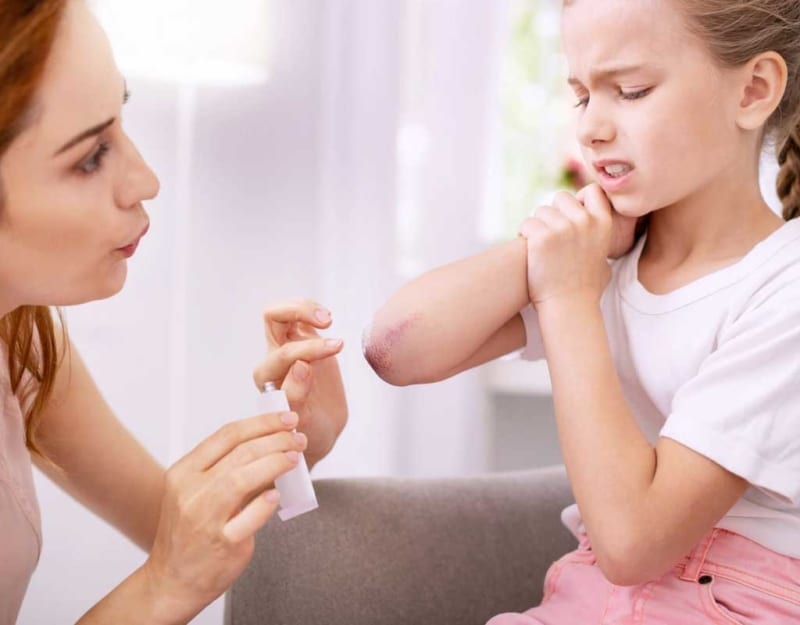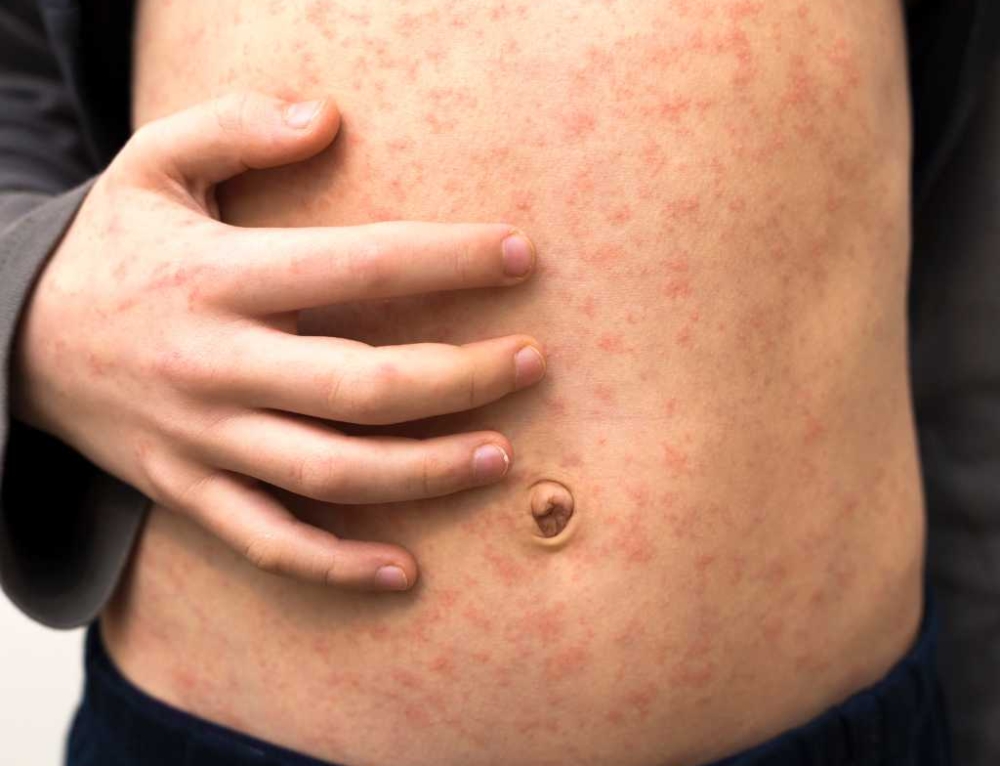Fortunately, the most common everyday injuries are minor wounds which can easily be attended to at home.
Childhood can sometimes seem like a continual stream of cuts, scrapes and other wounds. By far most of them are not serious and can be treated at home with a little knowledge on how best to help wounds heal.
What kind of wound is it?
A cut is an area of severed skin that has been penetrated with a sharp edge, such as a knife, a small tool or the edge of a sheet of paper (paper cuts are also painful). The wound will often bleed and have slightly dehiscent wound edges.
A usually harmless abrasion of the upper skin layers that occurs after falling on knees, hands or elbows, or scratching over a rough surface with some skin coming off subsequently. Abrasions can be painful since the injury often extends to the many fine nerve endings subjacent to the skin.
How to treat cuts, abrasions and other wounds when they first happen
There are 4 steps recommended for treating cuts, abrasions and other skin wounds. Even if there is a lot of bleeding, it’s really important to stay calm while you give the injured child a hug and reassure them they will be ok. You may need to seek medical aid; ask for advice if you are not sure. If the injured person is a child explain what you are going to do.
Step 1 – Wash
Wash your hands carefully before treating a wound and if they are available, wear disposable surgical gloves. Any break in the skin can be susceptible to bacteria penetrating.
Step 2 – Clean
A minor wound will stop bleeding quickly. If it doesn’t apply a little pressure to the spot with a non-stick pad until it stops. If the bleeding continues apply more gauze pads and keep the pressure on the wound while seeking medical advice.
After stopping the bleeding, cleanse the wound carefully to remove dirt and visible particles. Afterwards, gently dry the wound and surrounding skin area.
Do not remove embedded objects, leave that to medical staff.
Step 3- Cover
Cover the cut or abrasion with an appropriate dressing such as a wound pad, compress or an adhesive bandage. A plaster will protect the injured area from friction, bacteria and contamination, will absorb wound fluid and create conditions in which the wound can heal undisturbed.
Step 4 – Heal
Help wounds heal faster with lower risk of scarring by applying a Wound Healing Ointment regularly until the wound has healed completely. The ointment forms a protective barrier on the wound while creating an ideal moist healing environment that promotes up to 2x faster healing and helps to reduce scarring.
How to look after the wound as it heals
Don’t pick it!
Right after you get a cut or scrape your body starts healing the wound. White blood cells attack infection-causing bacteria. Red blood cells, fibrin, and platelets create a clot over your wound. And in no time, a scab forms. If you pick off the scab, you may not only reopen the wound and introduce bacteria, you could also create a larger scar.
Cover it
It is a wound care myth that keeping minor cuts and grazes uncovered helps them to heal faster. The contrary is true. Research shows that covered wounds heal more efficiently and have a reduced risk of infection. Moist wound healing technology, provides safe protection until the wound is completely healed.
Keep the dressings clean
Usually, wound dressings and plasters should be changed daily for hygienic reasons. If you use a plaster that provides moist wound healing conditions, it is recommended to leave it in place for up to two days or more in order to not interrupt the healing process.
Seek medical advice if you are concerned
Signs of your wound becoming infected include not only the occurrence of pus but also symptoms such as swelling, redness, heat, pain, itching or burning. In case of infection the wound seek medical care and special medical treatment.
Wound infections are not rare – up to 50% of acute wounds become infected!
ALWAYS READ THE LABEL. FOLLOW THE DIRECTIONS FOR USE. IF SYMPTOMS PERSIST, TALK TO YOUR HEALTHCARE PROFESSIONAL.
Content provided by Elastoplast







This is great information to put out there for people as sometimes people don’t know what to do in these situations. Being informed about how to care for wounds properly is the first step in looking after wounds!
These are the rules that we follow religiously as I was unfortunate enough to have a wound on my knee get infected as a child and that has always made me hyper vigilant to ensure the same thing doesn’t happen again, either to myself or to my family. We were chosen to trial the new elastoplast wound care kit so will be looking forward to seeing how it goes.
The Wound Healing Ointment sounds like a good plan. I grew up having a scab that never really healed well so I now have scar for it. And I want to definitely invest one for my son.
These are also rules we follow, fortunately we haven’t had to deal with anything more then an elbow or knee graze, but we always tell our kids not to touch or pick at the wound as it could become infected which would make it worse.
We pretty much follow the rules as above, works a charm! Of course you need to assess how bad it is first, whether it just needs a clean and plasters or something a little more serious. I have the Elastoplast spray and ointment and as yet to try it! It looks really good though! 🙂
Definitely some good things of what to do and what not to do. sometimes is damn near impossible to get a child not to pick a scab while healing but as you say cover it up then they can’t get to it that way.